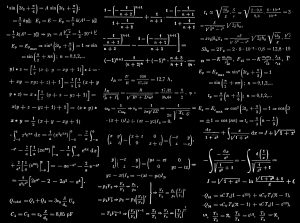Can the Abacus Improve Math Learning and Cognitive Development? Types, Uses, and Benefits

Hey there, math explorers! Have you ever seen an abacus? It’s a super cool tool with beads and rods that makes learning math fun and exciting. Imagine you’re on a treasure hunt, and each bead you move is a step closer to finding the hidden treasure. Sounds fun, right?
Meet my friend Sam. Sam used to find math really tough. Numbers and equations felt like a big puzzle with missing pieces. But then, Sam discovered the abacus, and everything changed! This ancient counting tool turned math into a game, making addition and subtraction as easy as pie.
But what exactly is an abacus? Picture a colourful frame filled with rows of beads that you can slide back and forth. Each movement of the beads helps you understand math in a whole new way. No more struggling with numbers on paper—now you can see and touch them!
What is an Abacus?
The Abacus is a manual counting tool used for performing arithmetic operations. The Abacus mathematics principles are foundational and help in understanding basic arithmetic operations such as addition, subtraction, multiplication, and division.
It consists of a series of rods or wires on which beads are moved to represent numbers. Each position of a bead represents a different place value, enabling users to perform calculations efficiently.
Imagine your child effortlessly sliding beads, gaining a profound understanding of numerical concepts. This ancient calculator not only sharpens cognitive abilities but also lays a robust foundation for lifelong mathematical proficiency.
Types of Abacus around the world
Check out the types of Abacus that cater to diverse mathematical needs and learning styles. Below mentioned are the different types of Abacus found around the world.
-
The Chinese Abacus (Suanpan): The divider on a Chinese Abacus separates the left and right strings of beads, with two beads on one side and five on the other. This design allows for both hexadecimal and decimal computations. The Abacus can be used for division, multiplication, and calculating square roots and cube roots if the user knows the techniques.
-
The Roman Abacus: Ancient Romans used stones as counters on a smooth table to perform calculations. It was developed to assist bankers, money changers, businessmen, and engineers. This type of Abacus was made from a metal plate. Additionally, the Romans invented other types of Abacuses such as the dust Abacus, the line Abacus, and the grooved Abacus.
-
The Japanese Abacus (Soroban): Inspired by the Chinese Suanpan, the Soroban Abacus emerged in the 14th century. The Japanese Soroban features wooden and bamboo rods that slide up and down. While it is still in use today, it has largely been replaced by electronic calculators.
-
The Russian Abacus: The primary difference between the Chinese Abacus and the Russian Abacus is the orientation of its rods. The rods on a Russian Abacus are placed horizontally, and beads are slid from right to left. A typical Russian Abacus measures 28 cm wide and 46 cm high. When using the Abacus, it should be placed on the desk so that the direction of the right hand aligns with the wires of the Abacus.
-
Binary Abacus: The Abacus is not just for arithmetic operations; it is also used to demonstrate how computers manipulate numbers. A binary Abacus helps explain the conversion of decimals into binary. It consists of three rows of beads, where each bead represents ‘on’ and ‘off’ or ‘1’ and ‘0’.
-
Cranmer Abacus: Created by Tim Cranmer, this Abacus is a modification designed to support learners with vision disabilities. The beads can be manipulated to help users understand numbers deeply. This Abacus can be used for various arithmetic processes.
Abacus: more than just mathematics
People often associate the abacus solely with math, but its uses extend far beyond that. Learning with the abacus offers children many benefits, helping them excel academically and develop essential life skills. Here are some of its main uses:
-
Mental Calculations: Mastering the Abacus enhances mental arithmetic skills, allowing individuals to perform complex calculations quickly and accurately without any digital devices by using visualization.
-
Cognitive Development: For children, using the Abacus improves concentration, memory, and problem-solving skills.
-
Learning Aid for Visually Impaired: The Abacus can be adapted for use by visually impaired individuals, providing them with a tactile method to perform calculations and understand numerical concepts.
-
Removes the fear of math: By making math more interactive and engaging, the abacus helps eliminate the anxiety and fear often associated with math, making it more enjoyable for children.
-
Teaches children to write faster and more neatly: Regular practice with the abacus helps children develop better hand-eye coordination, leading to improved handwriting speed and neatness.
Abacus for Kids
Discovering the Abacus early brings big benefits for kids. It makes math fun and exciting, turning a tricky subject into a fun challenge.
Using an Abacus at 6 or 7 years old, kids can quickly add numbers like 23 + 17 by sliding beads. This builds a strong math foundation, boosts skills, and helps kids feel confident about learning.
It sets them up for success in school and beyond. Plus, it’s a perfect way for young learners to explore the world of numbers and excel!
To sum it up
Embracing the Abacus isn’t just about math—it’s a gateway to unlocking endless learning possibilities. From its versatile types to its timeless applications, the Abacus enriches young minds beyond basic calculations.
Introducing kids to the Abacus sparks a journey of discovery and skill-building. It enhances math proficiency and boosts cognitive development. Let’s empower our children with the tools they need to thrive in today’s world and beyond!
SIP Abacus provides a range of advantages that influence your child’s growth. SIPAbacus ensures a 5X improvement in your child’s performance through quicker and more precise arithmetic calculations. We use a validated, predefined approach to assess and confirm your child’s performance before enrollment and after completing the foundational course. Check out the courses offered at SIPAbacus which your child can avail through offline classes.



